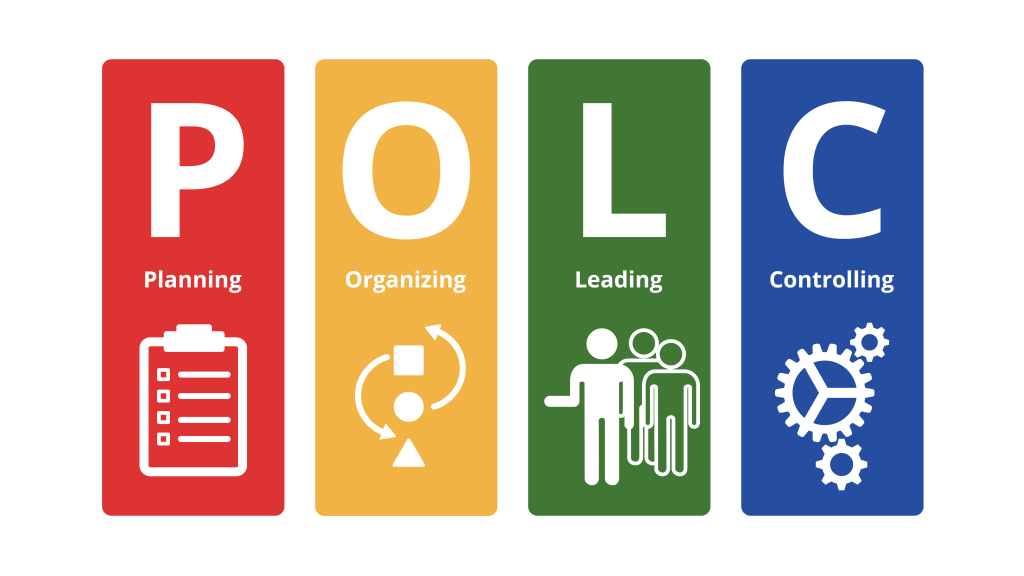1.1 Introduction to Principles of Leadership and Management
What’s in it for Me?
Reading this chapter will help you do the following:
- Explain who managers are and the nature of their work.
- Identify why you should care about leadership, entrepreneurship, and strategy.
- Describe the dimensions of the planning-organizing-leading-controlling (P-O-L-C) framework.
- Connect how economic performance feeds social and environmental performance.
- Compare what performance means at the individual and group levels.
- Define Katz’s three critical skill sets.
- Create a survivor’s guide to learning and developing principles of leadership and management.
We’re betting that you already have a lot of experience with organizations, teams, and leadership. You’ve been through schools, in clubs, participated in social or religious groups, competed in sports or games, or taken on full- or part-time jobs. Some of your experience was probably pretty positive, but you were also likely wondering sometimes, “Isn’t there a better way to do this?”.
After participating in this course, we hope that you find the answer to be “Yes!”. While leadership and management are both art and science, this text will help you identify and develop the skills essential to leading and managing yourself and others.
To being with, what is management, and what are the principles of management?
A manager’s primary challenge is to solve problems creatively, and you should view management as “the art of getting things done through the efforts of other people”.[1] Interestingly, if you look up the definition of a leader, you will find that many individuals and organizations use the same basic description as that of a manager – but we will discuss that more as we move through the chapter and the book as a whole.
The principles of management, are the means by which you actually manage, that is, get things done through others—individually, in groups, or in organizations. Formally defined, the principles of management are the activities that “plan, organize, and control the operations of the basic elements of [people], materials, machines, methods, money, and markets, providing direction and coordination, and giving leadership to human efforts, so as to achieve the sought objectives of the enterprise.”[2] For this reason, principles of management are often discussed or learned using a framework called P-O-L-C, which stands for planning, organizing, leading, and controlling.

Managers are required in all the activities of organizations: budgeting, designing, selling, creating, financing, accounting, and artistic presentation; the larger the organization, the more managers are needed. Everyone employed in an organization is affected by management principles, processes, policies, and practices as they are either a manager or a subordinate to a manager, and usually, they are both.
Managers do not spend all their time managing. When choreographers are dancing a part, they are not managing, nor are office managers managing when they personally check out a customer’s credit. Some employees perform only part of the functions described as managerial—and to that extent, they are mostly managers in limited areas. For example, those who are assigned the preparation of plans in an advisory capacity to a manager are making management decisions by deciding which of several alternatives to present to the management. However, they may have no participation in the functions of organizing, staffing, and supervising and no control over the implementation of the plan selected from those recommended. Even independent consultants are managers since they get most things done through others—those others just happen to be their clients! Of course, if advisers or consultants have their own staff of subordinates, they become a manager in the fullest sense of the definition. They must develop business plans, hire, train, organize, and motivate their staff members, establish internal policies that will facilitate the work and direct it, and represent the group and its work to those outside of the firm.
“Introduction to Principles of Management” in Principles of Management by University of Minnesota is licensed under a Creative Commons Attribution-NonCommercial-ShareAlike 4.0 International License, except where otherwise noted.
- We draw this definition from a biography of Mary Parker Follett (1868–1933) written by P. Graham, Mary Parker Follett: Prophet of Management (Boston: Harvard Business School Press, 1995). Follett was an American social worker, consultant, and author of books on democracy, human relations, and management. She worked as a management and political theorist, introducing such phrases as “conflict resolution,” “authority and power,” and “the task of leadership. ↵
- The fundamental notion of principles of management was developed by French management theorist Henri Fayol (1841–1925). He is credited with the original planning-organizing-leading-controlling framework (P-O-L-C), which, while undergoing very important changes in content, remains the dominant management framework in the world. See H. Fayol, General and Industrial Management (Paris: Institute of Electrical and Electronics Engineering, 1916). ↵

